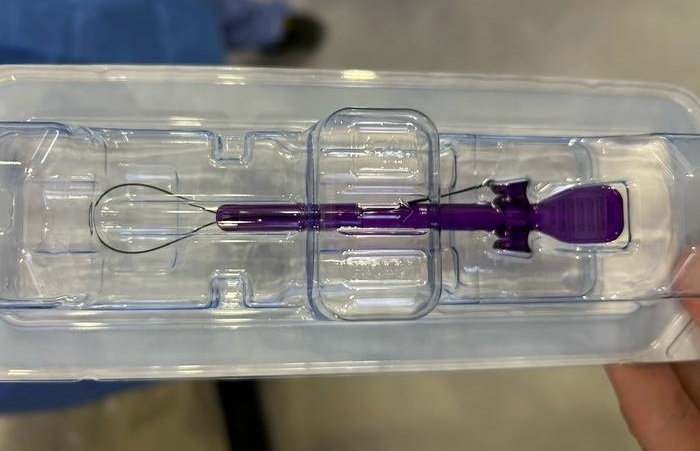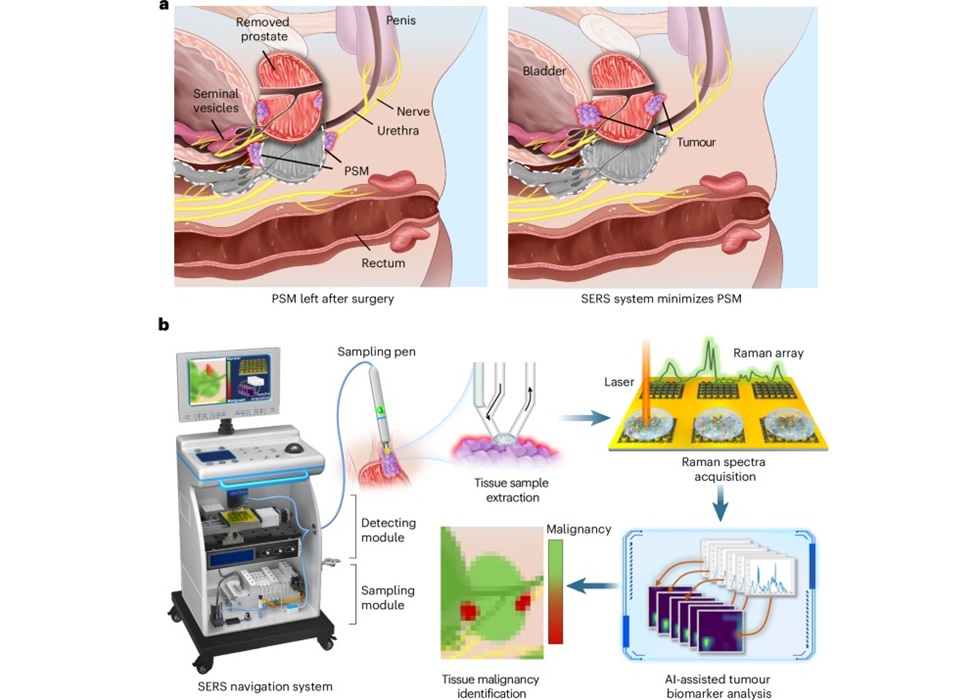Standard Diagnostic Tests Help Identify Appendicitis
|
By HospiMedica International staff writers Posted on 01 Mar 2015 |
A new study suggests that white blood count (WBC) and polymorphonuclear leukocyte differential (PMN%) can improve the predictive value of ultrasound (US) in children with suspected appendicitis.
Researchers at Boston Children’s Hospital (MA, USA) conducted a retrospective cohort study of 845 children who underwent an US examination for suspected appendicitis between January 1, 2010, and December 31, 2012. They then calculated negative and positive predictive values (NPV, PPV) for appendicitis for common constellations of US findings, and compared the results with and without the use of diagnostic WBC and PMN% laboratory thresholds.
The results showed that the ability to differentiate between children with and without appendicitis was significantly improved when the US and laboratory findings were paired. The risk of appendicitis rose from 79.1% to 91.3% when laboratory studies indicated a bacterial infection and sonography showed primary signs of appendicitis, such as increased blood flow or a thickening in the wall of the appendix. The risk of appendicitis rose from 89.1% to 96.8% when laboratory results were abnormal and the US showed secondary signs of appendicitis, such as fat near the appendix.
The ability to single out children who did not have appendicitis was also substantially improved; in children where the US finding showed neither a normal appendix nor evidence of appendicitis, the percentage of children who did not actually have appendicitis rose from 46% to 98.2%, affirming that the laboratory studies were within normal ranges. The study was published early online on January 30, 2105, in the Journal of the American College of Surgeons (JACS).
“We are not advocating that other hospitals adopt our sonographic categories or laboratory value cut-offs for WBC and PMN values, but rather to work collaboratively with their radiologists and emergency room physicians to develop their own approach for categorizing sonographic findings in their patients with suspected appendicitis, and then develop risk profiles that are tailor-made for their patients after incorporation of their institution’s laboratory data,” concluded lead author Shawn Rangel, MD, of the department of surgery.
PMNs are a type of WBC that arises from the myeloid cell line in the bone marrow and help the body to fight infection. PMNs include neutrophils, basophils, and eosinophils, all of which circulate in the bloodstream, as well as mast cells, which reside in soft tissues. Their primary role is to digest any foreign invaders. When PMNs are stained for examination, the cytoplasm takes on a grainy appearance under the microscope, hence they are also known as granulocytes.
Related Links:
Boston Children’s Hospital
Researchers at Boston Children’s Hospital (MA, USA) conducted a retrospective cohort study of 845 children who underwent an US examination for suspected appendicitis between January 1, 2010, and December 31, 2012. They then calculated negative and positive predictive values (NPV, PPV) for appendicitis for common constellations of US findings, and compared the results with and without the use of diagnostic WBC and PMN% laboratory thresholds.
The results showed that the ability to differentiate between children with and without appendicitis was significantly improved when the US and laboratory findings were paired. The risk of appendicitis rose from 79.1% to 91.3% when laboratory studies indicated a bacterial infection and sonography showed primary signs of appendicitis, such as increased blood flow or a thickening in the wall of the appendix. The risk of appendicitis rose from 89.1% to 96.8% when laboratory results were abnormal and the US showed secondary signs of appendicitis, such as fat near the appendix.
The ability to single out children who did not have appendicitis was also substantially improved; in children where the US finding showed neither a normal appendix nor evidence of appendicitis, the percentage of children who did not actually have appendicitis rose from 46% to 98.2%, affirming that the laboratory studies were within normal ranges. The study was published early online on January 30, 2105, in the Journal of the American College of Surgeons (JACS).
“We are not advocating that other hospitals adopt our sonographic categories or laboratory value cut-offs for WBC and PMN values, but rather to work collaboratively with their radiologists and emergency room physicians to develop their own approach for categorizing sonographic findings in their patients with suspected appendicitis, and then develop risk profiles that are tailor-made for their patients after incorporation of their institution’s laboratory data,” concluded lead author Shawn Rangel, MD, of the department of surgery.
PMNs are a type of WBC that arises from the myeloid cell line in the bone marrow and help the body to fight infection. PMNs include neutrophils, basophils, and eosinophils, all of which circulate in the bloodstream, as well as mast cells, which reside in soft tissues. Their primary role is to digest any foreign invaders. When PMNs are stained for examination, the cytoplasm takes on a grainy appearance under the microscope, hence they are also known as granulocytes.
Related Links:
Boston Children’s Hospital
Latest Critical Care News
- Magnetically Guided Microrobots to Enable Targeted Drug Delivery

- Smart Nanomaterials Detect and Treat Traumatic Brain Injuries Simultaneously
- Earlier Blood Transfusion Could Reduce Heart Failure and Arrhythmia in Heart Disease Patients
- 'Smart' Shirt Detects Epileptic Seizures in Real Time
- Skin Patch Measures Effectiveness of Flu/COVID Vaccines in 10 Minutes
- Complete Revascularization Reduces Risk of Death from Cardiovascular Causes
- Tiny Fish-Inspired Robots Navigate Through Body to Deliver Targeted Drug Therapy
- Coronary Artery Stenosis Could Protect Patients from Pulmonary Embolism Effects
- Sweat-Powered Sticker Turns Drinking Cup into Health Sensor
- Skin-Mounted 3D Microfluidic Device Analyzes Sweat for Real-Time Health Assessment
- New Therapeutic Brain Implants to Eliminate Need for Surgery
- Stem Cell Patch Gently Heals Damaged Hearts Without Open-Heart Surgery
- Biomaterial Vaccines to Make Implanted Orthopedic Devices Safer
- Deep Learning Model Predicts Sepsis Patients Likely to Benefit from Steroid Treatment
- Programmable Drug-Delivery Patch Promotes Healing and Regrowth After Heart Attack
- Breakthrough Ultrasound Technology Measures Blood Viscosity in Real Time
Channels
Surgical Techniques
view channel
Breakthrough Surgical Device Redefines Hip Arthroscopy
Hip arthroscopy has surged in popularity, yet surgeons still face major mechanical constraints when navigating deep joint spaces through traditional cannulas. Limited tool mobility and the need for an... Read more
Automated System Enables Real-Time "Molecular Pathology" During Cancer Surgery
Accurately identifying tumor boundaries during radical prostatectomy remains one of the most persistent challenges in prostate cancer care. Positive surgical margins occur in up to 40% of cases, increasing... Read morePatient Care
view channel
Revolutionary Automatic IV-Line Flushing Device to Enhance Infusion Care
More than 80% of in-hospital patients receive intravenous (IV) therapy. Every dose of IV medicine delivered in a small volume (<250 mL) infusion bag should be followed by subsequent flushing to ensure... Read more
VR Training Tool Combats Contamination of Portable Medical Equipment
Healthcare-associated infections (HAIs) impact one in every 31 patients, cause nearly 100,000 deaths each year, and cost USD 28.4 billion in direct medical expenses. Notably, up to 75% of these infections... Read more
Portable Biosensor Platform to Reduce Hospital-Acquired Infections
Approximately 4 million patients in the European Union acquire healthcare-associated infections (HAIs) or nosocomial infections each year, with around 37,000 deaths directly resulting from these infections,... Read moreFirst-Of-Its-Kind Portable Germicidal Light Technology Disinfects High-Touch Clinical Surfaces in Seconds
Reducing healthcare-acquired infections (HAIs) remains a pressing issue within global healthcare systems. In the United States alone, 1.7 million patients contract HAIs annually, leading to approximately... Read moreHealth IT
view channel
Printable Molecule-Selective Nanoparticles Enable Mass Production of Wearable Biosensors
The future of medicine is likely to focus on the personalization of healthcare—understanding exactly what an individual requires and delivering the appropriate combination of nutrients, metabolites, and... Read moreBusiness
view channel
Philips and Masimo Partner to Advance Patient Monitoring Measurement Technologies
Royal Philips (Amsterdam, Netherlands) and Masimo (Irvine, California, USA) have renewed their multi-year strategic collaboration, combining Philips’ expertise in patient monitoring with Masimo’s noninvasive... Read more
B. Braun Acquires Digital Microsurgery Company True Digital Surgery
The high-end microsurgery market in neurosurgery, spine, and ENT is undergoing a significant transformation. Traditional analog microscopes are giving way to digital exoscopes, which provide improved visualization,... Read more
CMEF 2025 to Promote Holistic and High-Quality Development of Medical and Health Industry
The 92nd China International Medical Equipment Fair (CMEF 2025) Autumn Exhibition is scheduled to be held from September 26 to 29 at the China Import and Export Fair Complex (Canton Fair Complex) in Guangzhou.... Read more












